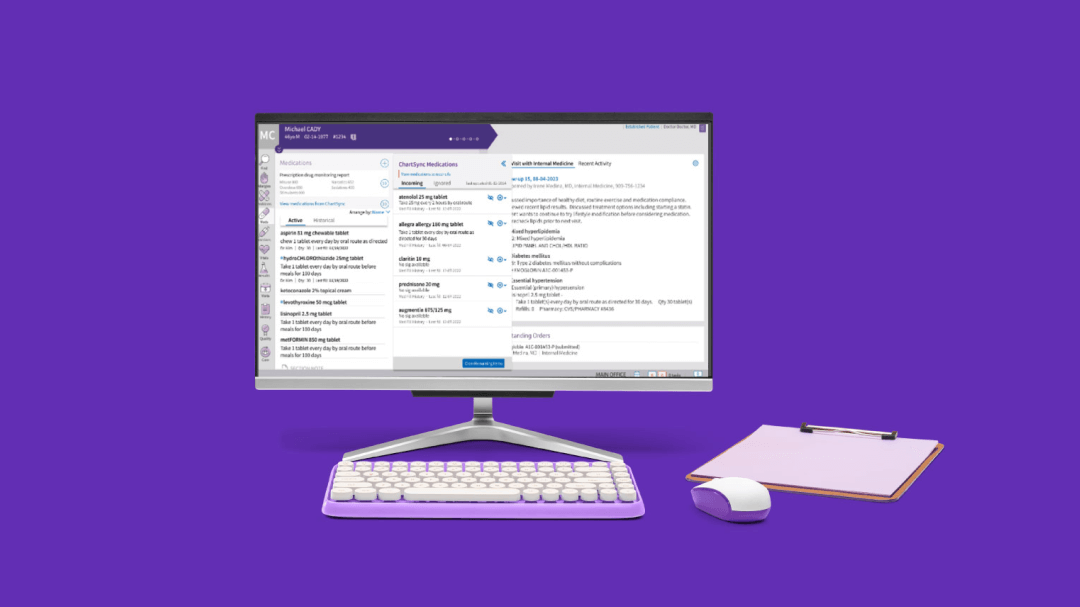
How interoperability raises the standards for healthcare data exchange
Interoperability is the cornerstone of seamless data exchange in healthcare, ensuring physicians have a full picture of their patient’s health and care journey. Yet, after years of regulation and investment, the promise remains elusive. Despite the hype, the gap between expectation and reality persists, leaving care teams scrambling for critical or timely information.
Over the past decade and a half, some health technology companies have invested in “intraoperability,” prioritizing easy data exchange between sites of care within their network at the expense of the broader healthcare network. Others invested in developing point-to-point connections to send documents between locations of care. In the meantime, more healthcare data is being digitized each day and providers are inundated with a flood of data – making it time consuming and challenging to find relevant information to help make clinical decisions.
Open access to, and transmission of, health data are table stakes – necessary, but not alone sufficient. At athenahealth, we are constantly asking ourselves how our technology can help reduce the burden on care teams as patients navigate through a growing number of care delivery sites. We are working to ensure that when a patient walks or dials in for an appointment with an athenahealth provider, the clinician has access to the patient’s longitudinal record regardless of where they received care.
That’s why for the last several years, we’ve made a significant investment in experiential interoperability - moving beyond basic data exchange into purpose-built workflows where data from all locations of care are incorporated seamlessly into the athenahealth workflow. The goal of experiential interoperability is to present real, contextualized information and insights to providers so they can deliver best-in-class care.
That’s what practices utilizing athenaOne deserve. It’s what those practices want to deliver for their patients. And we have made tremendous progress in delivering on that promise to our providers.
Last month at HIMSS in Orlando, we previewed a new product capability that perfectly illustrates what experiential interoperability looks like. ChartSync consolidates, deduplicates, and transforms incoming data into a common format, before organizing it into a single user experience where clinicians can view and interact with the external data.
The experience streamlines data integration behind the scenes and makes it easy for the care team to understand when new data has been added. ChartSync also empowers care teams to gain quick access to the source of the information, for additional context.

The ChartSync experience is globally connected, right out of the box. We automatically connect customers to the athenahealth network, CommonWell, Carequality, Surescripts, Public Health Registries and many other sources of data so that practices do not need to develop point-to-point integrations to access their patients’ charts. Data is either added to the chart automatically, reconciling data from sources into the chart or we offer a one-click reconciliation for data requiring review. ChartSync ensures that providers have a great experience viewing and acting on data, regardless of its source. Best of all, the experience is fully embedded into the clinical workflow, so providers aren’t sifting through an ocean of information to find the critical insight they need.
The following ChartSync features are being piloted by athenahealth customers right now:
- Allergy manual reconciliation, ingesting and parsing allergies from a new data source, deduplicating across documents, and surfacing those to clinicians to review then add to the patient chart or ignore, with one simple click.
- Incoming patient records preview, giving clinicians the ability to preview incoming Patient Record Sharing (PRS) documents from facilities on the Carequality & CommonWell networks before adding them to the patient's chart, allowing more control over what information is added to patient charts.
- Medication Fill History, setting thresholds for automatically adding medications to the Active Med List so clinicians can preview incoming data and control what goes into the patient chart as the central source of truth for a patient’s current treatment plan.
We’re excited to begin deploying ChartSync to more providers in the coming months to show the world what true, experiential interoperability looks like and how athena is beginning to solve healthcare’s insight issue.
Chad Dodd is the Vice President of Product Management at athenahealth.










